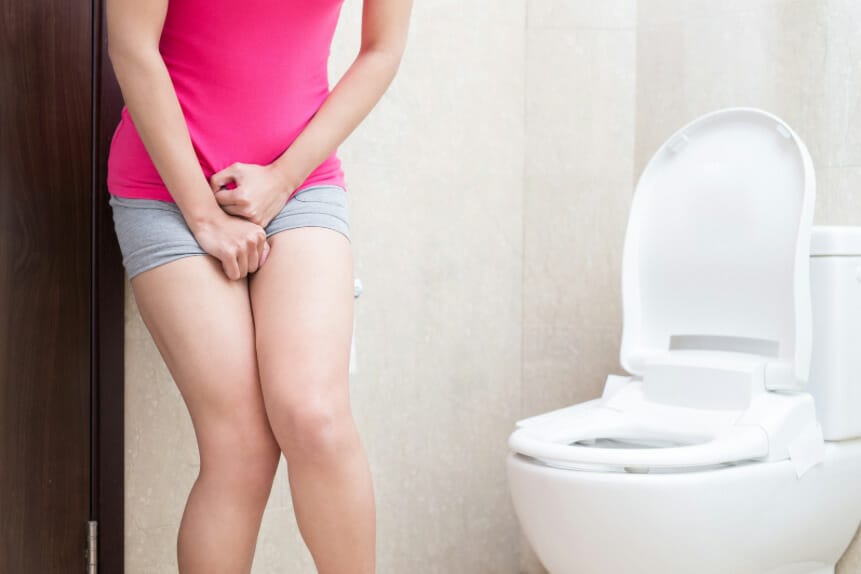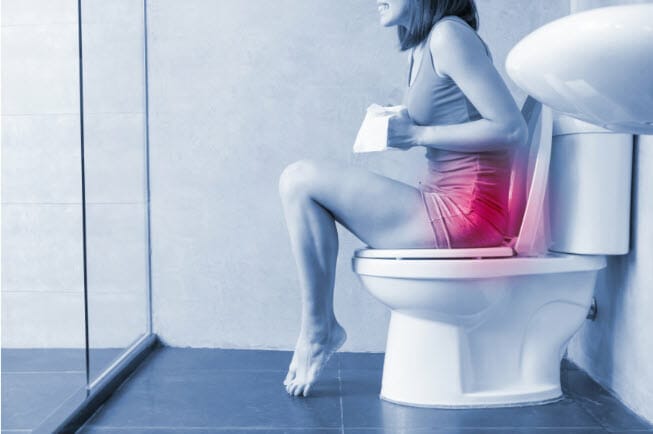Empowering Those with Urinary Incontinence: Breaking the Silence and Finding Solutions
Have you ever found yourself hesitating to talk about a certain topic? Or feeling uncomfortable even bringing it up in conversation? For millions of individuals around the world who suffer from urinary incontinence, this is an everyday reality. This often unspoken condition has kept those affected silent for far too long, enduring embarrassment and shame…
Have you ever found yourself hesitating to talk about a certain topic? Or feeling uncomfortable even bringing it up in conversation? For millions of individuals around the world who suffer from urinary incontinence, this is an everyday reality. This often unspoken condition has kept those affected silent for far too long, enduring embarrassment and shame while searching for solutions.
However, a transformative change is underway – today we are breaking the silence and empowering those with urinary incontinence to find their voice and discover effective solutions that can help them regain control over their lives.
In this article, we will delve into the struggles faced by those living with urinary incontinence as well as explore the range of innovative treatments and support systems available to transform their quality of life. It’s time to eradicate the stigma surrounding this common issue and ensure that nobody suffers silently any longer.
Understanding Urinary Incontinence: Causes and Types
Urinary incontinence, the involuntary leakage of urine, is a common condition that affects people of all ages and genders. It can be caused by various factors such as weakened pelvic muscles, nerve damage, or hormonal changes.
Causes of Urinary Incontinence
- Weak Pelvic Muscles: Pregnancy, childbirth, aging, and obesity can weaken the pelvic floor muscles responsible for controlling urination.
- Nerve Damage: Conditions like diabetes or multiple sclerosis can damage the nerves that control bladder function.
- Hormonal Changes: Menopause often leads to decreased estrogen levels which greatly affect bladder control.
Types of Urinary Incontinence
- Stress Incontinence: This occurs when physical activity puts pressure on your bladder causing leakage. Laughing, sneezing, and coughing are common triggers.
- Urge Incontinence (Overactive Bladder): The sudden urge to urinate followed by an involuntary release of urine is characteristic of this type of incontinence.
- Overflow Incontinence: A constant dribble due to an inability to empty the bladder fully. Those with urinary retention or weak bladder muscles often experience this form of incontinence.
Understanding what causes urinary incontinence and its different types helps individuals seek appropriate treatment options while destigmatizing a condition that many suffer from silently.
The Psychological Impact of Urinary Incontinence: Breaking the Stigma
Living with urinary incontinence can have a profound psychological impact on individuals. The shame and embarrassment associated with this condition often leads to feelings of isolation and low self-esteem. Many people experience anxiety and depression as they struggle to cope with the daily challenges that come with urinary incontinence.
- Feelings of embarrassment: Urinary incontinence is often seen as a taboo topic, causing those who suffer from it to feel embarrassed about their condition. This social stigma prevents many individuals from seeking help or talking openly about their struggles.
- Isolation and loneliness: The fear of leakage or odor can lead people with urinary incontinence to avoid social situations, leading to isolation and loneliness. They may distance themselves from friends, family, and even community activities due to the fear of potential accidents.
- Decreased self-confidence: Constant worry about leaks can erode an individual’s self-confidence over time. They may become hesitant to engage in physical activities or attend important events for fear of public humiliation.
The psychological impact of urinary incontinence should not be underestimated. It is crucial for us as a society to break the silence surrounding this issue, offering support and understanding instead of judgment. By providing education, promoting awareness campaigns, and fostering open conversations about urinary incontinence management options, we can empower those affected by this condition to find solace knowing they are not alone.
Helpful Solutions for Dealing with Urinary Incontinence
Fortunately, there are various solutions available that can enhance the quality of life for individuals living with urinary incontinence issues:
- Seeking professional help: Consulting healthcare professionals who specialize in urology or pelvic floor muscle training can provide valuable guidance on managing urinary incontinence problems effectively.
- Establishing a routine: Creating a regular bathroom schedule helps manage symptoms by ensuring timely voiding.
- Utilizing absorbent products: Wearing protective undergarments, such as pads or adult diapers, provides a sense of security and helps manage leakage discreetly.
- Strengthening pelvic floor muscles: Engaging in exercises specifically targeting the pelvic floor muscles can strengthen them and improve bladder control over time.
- Exploring medication options: Certain medications can help alleviate urinary incontinence symptoms. Consulting a healthcare professional can provide insight into available pharmaceutical solutions.
By acknowledging the psychological impact of urinary incontinence and providing practical solutions, we can empower those dealing with this condition to live fulfilling lives without stigma or shame.
Empowering Through Education: Resources and Support for Those with Urinary Incontinence
Resources and Support for Those with Urinary Incontinence
- Understanding your condition: The first step in empowering yourself is to educate yourself about urinary incontinence. Learning about the causes, symptoms, and treatment options will help you make informed decisions about managing your condition.
- Seek medical advice: If you are experiencing urinary incontinence, it’s important to consult a healthcare professional who specializes in urology or gynecology. They can provide an accurate diagnosis, suggest appropriate treatments, and offer guidance on lifestyle changes that may improve your symptoms.
- Join support groups: Connecting with others who are going through similar experiences can be incredibly beneficial. Look for local or online support groups where you can share stories, gain insights from others’ journeys, and receive emotional support from people who truly understand what you’re going through.
- Explore physical therapy options: Pelvic floor exercises have been shown to strengthen the muscles that control urination and reduce leakage incidents. Consider consulting with a pelvic floor physical therapist who can guide you through personalized exercises and strategies tailored to your specific needs.
- Stay informed about products: There are numerous products available on the market designed to manage urinary incontinence discreetly and effectively. Stay updated on the latest innovations, such as absorbent pads or underwear, that cater specifically to different levels of leakage severity.
Remember that seeking help is not a sign of weakness but rather a courageous step towards taking control over your wellbeing.
Lifestyle Changes and Self-Care: Managing Urinary Incontinence at Home
Living with urinary incontinence can be challenging, but there are several lifestyle changes and self-care practices that can help manage the condition. Here are a few strategies to consider:
- Manage Fluid Intake: Keep track of how much you drink throughout the day and try to spread your fluid intake evenly. Avoid consuming large amounts of liquid before bedtime to minimize nighttime accidents.
- Maintain Healthy Weight: Excess weight can put pressure on the bladder, so maintaining a healthy weight through regular exercise and a balanced diet is important.
- Strengthen Pelvic Floor Muscles: Engaging in pelvic floor exercises, also known as Kegel exercises, can strengthen the muscles that support the bladder.
In addition to these lifestyle changes, there are several self-care practices that can make everyday life more comfortable for those with urinary incontinence:
- Wear Absorbent Products: Using absorbent pads or underwear can provide reassurance and minimize any embarrassment related to leakages.
- Stay Prepared: Carry extra sets of absorbent products whenever you leave home, ensuring you have what you need for unexpected leaks.
- Practice Good Hygiene: Cleanse yourself gently after each episode of leakage or urination to prevent skin irritation or infection.
Making these small adjustments to your daily routine can go a long way in managing urinary incontinence and empowering yourself to live life confidently. Remember, it’s essential not only to break the silence surrounding this condition but also seek professional guidance if needed.
Exploring Medical Interventions: Treatment Options for Urinary Incontinence
Behavioral techniques: These methods involve making simple lifestyle changes that can help manage urinary incontinence. Training the bladder through scheduled bathroom visits and pelvic floor muscle exercises, also known as Kegel exercises, can improve control over urination. Limiting caffeine intake and avoiding constipation are other strategies that may alleviate symptoms.
Medications: Several medications are available to treat different types of urinary incontinence. For example, anticholinergic drugs aid in reducing bladder contractions, while alpha-blockers relax muscles around the urethra to ease urine flow. However, it is important to consult with a healthcare provider before starting any medication regimen.
Surgical interventions: For severe cases or when other treatments have not provided relief, surgery may be an option. Procedures such as sling procedures or bladder neck suspension can provide support to the urethra and help control leaks. It is crucial to discuss potential risks and benefits with a surgeon before considering surgery.
Regardless of the chosen treatment pathway, seeking professional advice is vital in managing urinary incontinence effectively and regaining confidence and quality of life.
Finding Strength in Community: Sharing Stories and Building Support Networks
When living with urinary incontinence, it can be incredibly isolating. One of the best ways to break through that isolation is by connecting with others who are going through similar experiences. By coming together as a community, we can share our stories and find strength in knowing that we’re not alone.
By sharing our stories, we create a safe space where people feel comfortable talking openly about their journey with urinary incontinence. Whether it’s through support groups or online forums, these platforms provide an opportunity for individuals to discuss their challenges, triumphs, and seek guidance from those who have been there before.
Building support networks is essential for empowerment and finding solutions. Through these connections, individuals can tap into a wealth of knowledge and advice that may help them on their own personal journey towards managing urinary incontinence. It’s remarkable how validation from someone else who truly understands firsthand what you’re going through can make all the difference.



